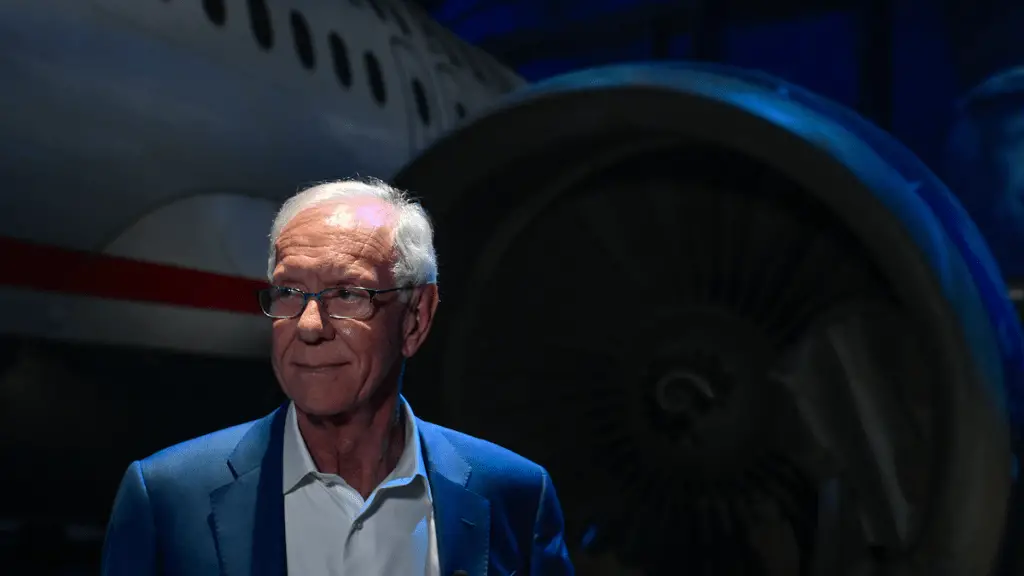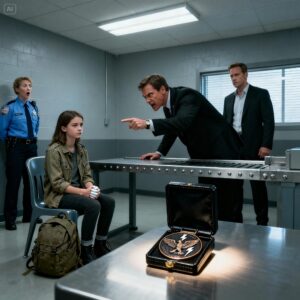When I first saw the headline—Hero Pilot Captain Sully Shares Terrifying Theory on Why DC Plane Crash Happened—I nearly dropped my phone. If there is one person whose insight on aviation disasters carries immense weight, it is none other than Captain Chesley “Sully” Sullenberger, the man behind the legendary emergency landing on the Hudson River in 2009, which saved 155 lives. Now, Sully is sounding the alarm over the recent tragic mid-air collision near Washington, D.C., which resulted in the loss of 67 lives. His primary concern? The dangers of nighttime flights over water, which he believes may have played a crucial role in this devastating accident.
The Hazards of Night Flights Over Water
According to Sully, one of the primary factors that could have contributed to the crash is the challenge of flying over water at night. Unlike land, where city lights and road networks help pilots orient themselves, large bodies of water offer little to no visual reference points. This lack of ground light reflection can make it incredibly difficult for pilots to judge their altitude and distance from other aircraft.
“All you can see are the lights on them,” Sully explained, emphasizing how deceptive these conditions can be. When two aircraft rely solely on visual contact in an already challenging environment, the margin for error shrinks dramatically. In this tragic case, something went terribly wrong, and that final, crucial buffer zone between the two aircraft was breached.
Air Traffic Control: Could They Have Prevented It?
Some might wonder whether an air traffic controller should have intervened to prevent the collision. While controllers play a vital role in keeping aircraft separated, there are instances where pilots assume responsibility for maintaining safe distances—especially when they establish visual contact with one another. Sully pointed out that this protocol was likely in play, meaning that at least one of the pilots must have seen the other aircraft before disaster struck.
Despite that, the crucial separation between the two planes was lost. Sully likened the situation to “dominoes lined up the wrong way,” where a single miscalculation can lead to a catastrophic chain reaction. The combination of nighttime conditions, water reflections, and possible pilot misjudgment turned an otherwise routine flight into a fatal disaster.
Challenges of Flying Near Reagan National Airport
The location of the crash has also raised concerns, particularly given the complexities of operating near Ronald Reagan Washington National Airport (DCA). Known for its short runways and proximity to other airfields, DCA is already considered one of the most challenging airports to navigate.
Sully noted that pilots landing or taking off from Reagan National require specialized training due to these unique challenges. Maneuvering through the heavily trafficked airspace around the nation’s capital demands heightened attention and precision, leaving little room for error.
Compounding this issue, reports have emerged suggesting that the air traffic controller on duty at the time was juggling multiple responsibilities—including handling both the plane and the military helicopter involved in the collision. If true, this raises serious questions about whether workload fatigue contributed to the disaster.
What the Black Box Could Reveal
Investigators have already retrieved the black boxes from the submerged wreckage in the Potomac River, offering a vital opportunity to reconstruct the crash’s final moments. The recorded conversations, instrument readings, and cockpit alerts from both aircraft will be crucial in determining exactly what went wrong.
Early reports indicate that air traffic control may have been stretched too thin, with one controller managing both departing flights and helicopter activity at the same time. If these suspicions are confirmed, it could spark renewed debates about staffing shortages in air traffic control towers across the country.
Sully’s analysis suggests that a perfect storm of factors—poor visibility over water, air traffic control overload, and pilot miscommunication—may have led to the crash. And if someone as experienced as Sully is concerned, the aviation industry should be paying close attention.
Lessons from the ‘Miracle on the Hudson’
Captain Sullenberger has long been an advocate for improved aviation safety, and his experience during the Miracle on the Hudson serves as a powerful reminder of why rigorous training and preparedness matter. When US Airways Flight 1549 lost both engines due to a bird strike, Sully’s expertise and quick thinking saved every passenger and crew member on board.
Since that day, he has worked tirelessly to push for better pilot training, more robust incident investigations, and stricter safety protocols. His warning about the D.C. crash isn’t just speculation—it’s based on a lifetime of experience in understanding how aviation accidents unfold.
Aviation Safety: What Needs to Change?
The D.C. plane crash underscores the need for urgent changes in aviation safety, particularly in high-traffic urban airports like Reagan National. Here are some key areas that experts—including Sully—believe need immediate attention:
- Improved Pilot Training for Night Flights Over Water
- Pilots need enhanced training to recognize and respond to the unique visual limitations that come with nighttime water flights. Enhanced simulation exercises and stricter protocols could help mitigate risks.
- Better Coordination Between Military and Civilian Aircraft
- Given that one of the aircraft involved was a military helicopter, stronger coordination between military and civilian air traffic controllers could prevent similar incidents in the future.
- Reducing Air Traffic Controller Workloads
- Ensuring that controllers are not overwhelmed with multiple responsibilities at once could help prevent mid-air miscommunications and accidents.
- Mandatory Separation of Flight Paths Over Water
- Establishing stricter guidelines on altitude and routing for nighttime flights over water could add an extra layer of protection against visibility-related crashes.
Final Thoughts: Is This a Wake-Up Call for the Aviation Industry?
Sully’s insights on the D.C. plane crash serve as a sobering reminder that even in an industry with exceptional safety records, lapses can still occur. The fact that a seasoned professional like him is concerned about nighttime flight conditions and air traffic control workload should prompt serious discussions among airline executives, policymakers, and pilots.
If history has taught us anything, it is that aviation safety evolves through learning from past mistakes. The loss of 67 lives is a tragedy—but if this incident leads to necessary safety reforms, it could prevent future disasters. As Sully himself has emphasized time and again, “Any lapse could potentially be fatal, even though we have a lot of safety.”
The aviation industry must heed his warning and take proactive steps to ensure that the next potential crash is prevented before it ever happens.






